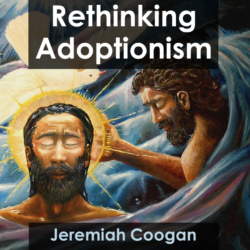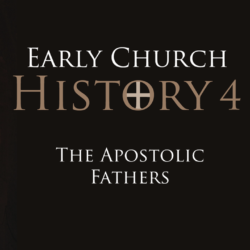Apologetics 11: New Testament Transmission
With the New Testament we can’t argue for a reliable transmission on the basis of meticulous Hebrew scribes. More often, especially early on, the Christian scribes focused more on quantity than quality so they could get the word out as quickly as possible. However, the sheer number of manuscripts that survived and the relatively early date of several ensure that we can employ a range of strategies to recover the original text with 99.5% accuracy. In fact, when we compare the New Testament to other ancient literature it is almost embarrassing how much better it is than the others.
If you would like to take this class for credit, please contact the Atlanta Bible College so you can register and do the necessary work for a grade.
Notes:
How To Determine Reliable Transmission
- Two factors that need to be tested to prove reliability
- number of copies
- time span between extant copy and autograph
- extant means the existing copy
- autograph means what was originally written
A Wealth of Manuscripts
- extant means currently in existence
- Uncial manuscripts
- all-capital Greek letters
- 306 manuscripts dating to as early as the third century (200’s ad)
- Codex Sinaiticus and Codex Vaticanus (both date to around ad350
- about 250 years between the completion of the NT and the first full copies of it
- Minuscule
- Cursive writing emerged in ad 800
- 2,856 manuscripts
- Lectionaries
- Contain NT Scripture in the sequence that it was to be read in the early churches at appropriate times of the year
- 2,403 manuscripts
- Total Greek Manuscripts = 306 + 2856 + 2403 = 5,565 currently
(according to Bruce Metzger) - Also there are ancient translations
- Approximately 10,000 copies of the Latin Vulgate
- 9,300 copies in Ethiopic, Syriac, and Aramaic.
- Grand Total = over 24,000 manuscripts
- critical editions
- NA28 \ all modern translations for the NT are based on one of these
- UBS4 /
- Stephanus[1] (KJV was translated from Stephanus) see footnote and next page
- originated from Erasmus’ 1516 critical edition and complutensian polyglot of 1522
- based on 20 to 25 mss, mostly medieval 8th c. or later
- notable differences
- Comma Johanneum
- two later additions that still appear in our Bibles are Adulteress woman and long ending of Mark
- resources
- Bruce Metzger’s A Textual Commentary of the Greek New Testament
- NET Bible
- Translations
- major strategies
- formal equivalence (word for word)
- dynamic equivalence (thought for thought)
- translations using outdated Greek manuscripts
- KJV, NKJV, YLT, ASV, Amplified
- range of Bibles from most literal to least
- NASB
- HCSB
- ESV
- NRSV
- NET
- NAB
- NJB
- NIV
- NCB
- GNB
- CEV
- NLT
- Living
- Message
- major strategies
Time Between Autograph and Extant Manuscript
- see chart on pp. 142-143 in Building Belief
- The John Rylands papyri manuscript found in Egypt, which is a small portion of the Gospel of John, is dated from ad 117-138. This means that we have a manuscript within nearly 30 years of the autograph. (Only 30 years between Gospel of John and P52 – John Ryland’s Papyrus)
Variants between Manuscripts
- If we have enough copies close enough to the originals, we can reconstruct an accurate reading. “Modern scholars have developed all sorts of strategies for compensating for all of these errors, and the Bible today is in better shape than it has ever been.” —Truth in Translation page 4 by BeDuhn
- We cannot use the scribal argument anymore. Unfortunately by the time many copies were being made, the church was largely Gentile and followed the secular standards for making copies.
- What about variants? “The NT, then, has not only survived in more manuscripts than any other book from antiquity, but it has survived in a purer form than any other great book—a for that is 99.5% pure” Norman Geisler and William Nix
- Textual Criticism Rules
- earlier mss are more likely to be correct
- mss copied more carefully are more likely to be correct
- a variant attested across a wider geography is more likely to be correct
- more difficult reading is more likely to be correct
- shorter reading is more likely to be correct unless material was omitted because of parablepsis or for theological reasons
- a text that diverges from parallel accounts is more likely to be correct
- a text matching the author’s style and vocabulary is more likely to be correct
- the variant that more readily explains how other variants came into being is more likely to be correct
——————
[1] One of these is the reading “book of life” in Revelation 22:19. All known Greek manuscripts here read “tree of life” instead of “book of life” as in the textus receptus. Where did the reading “book of life” come from? When Erasmus was compiling his text, he had access to only one manuscript of Revelation, and it lacked the last six verses, so he took the Latin Vulgate and back-translated from Latin to Greek. Unfortunately, the copy of the Vulgate he used read “book of life,” unlike any Greek manuscript of the passage, and so Erasmus introduced a “unique” Greek reading into his text. (5) Since the first and only “source” for this reading in Greek is the printed text of Erasmus, any Greek New Testament that agrees with Erasmus here must have been simply copied from his text. The fact that all textus receptus editions of Stephanus, Beza, et al. read with Erasmus shows that their texts were more or less slavish reprints of Erasmus’ text and not independently compiled editions, for had they been edited independently of Erasmus, they would surely have followed the Greek manuscripts here and read “tree of life.”






